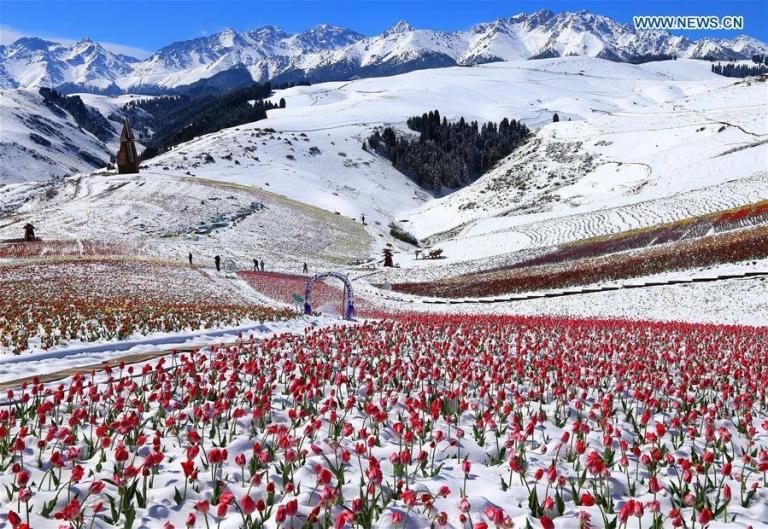Beautiful and fertile Xinjiang
2 min readXin jiang has a unique geological location, abounding in water, light and heat resources, which are suitable for the growth of many specialty crops. Therefore, Xin jiang is rich in agricultural product resources, and is the important agricultural products of grain, cotton, livestock and fruit. Xinjiang now has nearly 4.13 million hectares of arable land, and the per capita arable land is 0.2 hectare, which is the twice of the per capita arable land nationwide: the arable land reserve is 15 million hectares and ranks first in China. Xin jiang has plentiful fresh water resources with more than 570 large and small rivers,87.9 billion m³ of annual surface runoff and 15.3 billion m³ of recoverable underground water; annual average sunshine duration is from 2,600 hours to 3,500 hours, ranking second in China. The unique natural and ecological environment have bred a diverse of crop varieties, and there are more than 100 agricultural products having competitive advantages in the domestic andforeign markets and special agricultural products such as grapes, cantaloupe, tomatoes, hops and wolfberry are famous at home and abroad with their special qualities. Xinjiang is one of the most suitable regions in the world for tomato growth.

Xinjiang, one of China’s ma jor agricultural provinces, has now formed some advantageous and leading industries such as cotton, grain, sugar beets, fruit and livestock, which have important positions in China. Among them, advantageous and special agricultural products with wine grapes, hops, wolfberry, safflower, tomato, sugar beet, sunflower and flax as the leading products occupying important shares in China and has formed several regional, high-quality, high-yield and unique industrial belts and has become a competitive processing and export base at home and abroad with the characteristics of pollution free, green and supplying organic agricultural products. Among them, the production volume of tomato sauce production accounts for 90% of China’s total output and accounts for 20% of the world production volume, and the export of tomato sauce accounts for 1/4 of the international trade exports; both the planting area and production volume of carthamus tinctorious account for over 60% of China; the production volumes of hops and wolfberry account for over 70% and over 50% respectively of the total production of China.

Xin jiang, one of China’s ma jor agricultural provinces, is constantly enhancing the guarantee of food supply. The Planned Area of Hundred-billion-catties-food Projects has been established in the major grain-producing counties and Ili Valley to strengthen grain cultivation; grow cottons and conduct agricultural fruits and specialty horticultural productions in Southern Xinjiang; focus on growing cottons, processing cantaloupe and facility vegetables in the Turpan Depression along the northern Tianshan Mountains in Northern Xin jiang; focus on growing grapes, cantaloupe and facility vegetables in the Turpan-Kumul Basin in eastern Xinjiang; focus on growing wheat, maize, beans, facility vegetable and melon seeds in li, Tae Basin and Altai.









